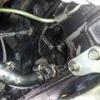Easy Way To Identify Neo Head
Announcements
-
Similar Content
-
Latest Posts
-
Wrong question. There's no point in spending the rather large sum of cash and effort to add turbo, without taking it to the "sensible" limit of the motor itself. If you have to upgrade injectors, etc, then so be it. That is a tiny fraction of what it will cost you to turbo it.
-
Measure voltage at the starter solenoid terminal when the key is at start and it has clicked. If it is really low, then the suspicion falls on the ignition switch (contacts or wiring thereof) as causing a voltage drop instead of sending enough volts to throw the solenoid all the way to engage the starter itself. If it is a decent voltage, then the suspicion is on the solenoid. Might have s horted coil, or might hva dirty contacts. Rip the starter off, dismantle, clean up contacts and inspect winding. It might not be possible to see if there is a short in the winding though. I have a spare starter here that I could measure the resistance of the coil, as a guide to about what it should be, if you need a comparison. <parts hoarder>No you cannot have it.</parts hoarder>
-
Absolutely matters because, while a temperature change will eventually reach a sensor at the end of a static line, the response time is far far far too slow to be useful. Might as well not have a temp gauge at all.
-
When I was eyeing off the 370GT (after deciding I didn't want to spend 30-40k+ to relive my early 20s in an R33) I thought it'd be a good project to add a turbo to it. Now that I have a 370GT, and I've had a couple of chances to open it up, I'm pretty stunned by how much power it makes 🫠 Honestly, the way the VVEL opens it up, it almost feels like there's a little turbo tucked away in there somewhere. It's like Nissan looked at VTEC and said "hold my beer" 😁 Has anyone thrown a turbo into their 370Z or 370GT? Is there a conservative boost level you can run without having to upgrade the fuel system, or are bigger injectors and a bigger pump a given?
-




Recommended Posts
Create an account or sign in to comment
You need to be a member in order to leave a comment
Create an account
Sign up for a new account in our community. It's easy!
Register a new accountSign in
Already have an account? Sign in here.
Sign In Now